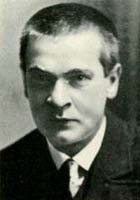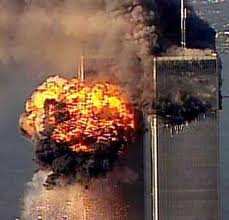Surviving the Holocaust, Primo Levi wrote the poem ‘Buna’ as a means of self reflection on the transformation he experienced after his tragic time at Auschwitz. Levi faced what some consider the most horrific act committed by humanity, and he survived. However, he did not leave the death camp gates unscathed. He experienced an inner transformation which his poem ‘Buna’ reveals by painting an image of the horrors of Auschwitz and Levi’s metamorphosis from an excited youth to a war weathered adult through his scientific writing style and address to a rhetorical other and his past self. For Levi, “Buna” functioned as a tool of visualizing inner turmoil and as a means of drawing attention to social atrocity.
According to Kelly Cefalu, a scholar on Holocaust history, Primo Levi was a successful man, and he had the world ahead of him before his capture and sentence to Auschwitz. His study of chemistry would have opened many opportunities for him. Primo Levi was born July 31, 1919 in Turin, Italy to a liberal Jewish family. He was bullied as a child, for he was small, intelligent and one of the few Jewish people to attend the Massimo d’Azeglio Royal Gymnasium(Cefalu). He finished primary school and went on to secondary school to study chemistry(Cefalu). In 1941, Levi graduated from the University of Turin in Italy and then pursued his doctorate thesis in chemistry, but because of the Manifesto of Race, the Italian race laws of that time, he had difficulty finding a position for his research(Primo Michele Levi). Luckily, he was approached by a fellow student of Turin University and could finish his graduate research by riding off the privileges of this other, non-jewish student, and thus obtain his doctorate. Unfortunately, the status of the Jewish people in Italy declined in 1943 when Benito Mussolini was installed as the leader by the Germans and Levi was forced to return home (Primo Michele Levi).
Levi returned home to his family in Turin, who at that time were hiding in their holiday home in La Saccarello, outside of Turin. Levi then joined the Italian resistance movement, an organization consisting of untrained and unprepared Italian men whose goal was to resist Nazi progress. It was not long before he and the other men were captured and sent to the Nazi death camps, specifically Auschwitz(Cefalu). This Primo Levi is the one whom the latter half of his poem describes. This was an individual who was “a strong man,” who had a woman who “walked at your side,” who had a name. Peter Balakian, writer for The American Poetry Review, calls the pre-Auschwitz Levi lovestruck, and ambitious, but soon transformed by his exposure to Auschwitz(Balakian).
‘Buna’ stems from two words: Butadiene and Natrium, and the name of the camp(Cefalu). Both are chemical ingredients for synthetic rubber, the product of the lab in which Levi worked during his imprisonment at Auschwitz. This poem brings to mind images of the camp, and then it transitions to a section of address to a changed man, the man who walked with a woman by his side, a man who was confident. I interpret this individual to be Levi’s pre-Auschwitz self. There exist three Primo Levis: the proud, promising pre-Holocaust Levi, the empty, tortured and captive Levi, and the haunted and guilty post-Holocaust Levi. ‘Buna’ connects those three facets of Levi by recognizing the way he once was, how the camp treated and changed him, and the response of his current self to meeting his old self.
The style that Primo Levi implemented to write ‘Buna’ was quite interesting. I think Levi saw life through the eyes of a chemist, and he used this perspective to write(Losey). What I know of chemistry helped me to see that Levi wrote ‘Buna’ much like a chemical reaction; he described the reactants, his former self and Auschwitz, the reaction, Auschwitz’s processes and the way it affected him, and the products, his retrospective current self.
Levi also uses his characteristic style of address to develop an atmosphere of separation from the subject of the poem. He continually uses the ambiguously beautiful ‘you.’ It can mean both, an individual or a group of individuals. In “Shema,” another of his poems, ‘you’ begins addressing many persons, but then it focuses down to the level of one person: “Or may your house crumble” and “Disease render you powerless.” ‘You functions similarly in ‘Buna.’ “You multitudes with dead faces” clearly means many groups of people suffering in the camps, but the shift to “You have broken what’s left of the courage within you./Colorless one, you were a strong man” expresses a shift to a singular ‘you’, which I believe is the Auschwitz Levi. This shift from a collective subject to a singular subject embodies a facet of ‘Buna’ that makes it an amazing poem. The poem starts by bringing the reader into a scene of many individuals, then it narrows the group down until it is the reader who is “so tired” that he can “no longer grieve.” Gil Anidjar, writer for Tikkun Magazine, says that this is a perfect technique for pulling the reader into a sense of emptiness and pain (Anidjar).
Primo Levi’s “Buna” had multiple roles. According to Anidjar, it served as a means of dealing with inner emotional turmoil(Anidjar). As mentioned earlier, Levi did not leave Auschwitz unmarred. His body was physically decrepit, but the emotional and mental strain struck him much deeper. The instances which led to Levi’s survival were lucky to say the least; he happened to be at a camp where a chemist was needed to help produce synthetic rubber, so he gained the luxury of working in a sheltered laboratory, helping him avoid more physically demanding and draining labor that many others experienced. Also, he contracted Scarlet Fever and was sent to the infirmary, which prevented him from going on the Death March. That allowed for his rescue by Russian forces when the camp was liberated in 1945. The fact that he survived when so many died left him with survivor’s guilt. Jay Losey states that, unsurprisingly, Levi also suffered from depression (Losey). A year later, he wrote ‘Buna.’ ‘Buna’ was a medium through which he could address the transformation he experienced. For him, it was a tool of healing, as can be seen from his move toward being advocate against inhumane action(Losey).
‘Buna’ further functioned as means of bringing social awareness to readers(Losey). As mentioned above, readers emerge into a scene of death and oppression, and eventually they reach the end of the poem where Levi questions what they have become. Unlike prose and other forms of writing, poetry reaches to the depths of the soul, awakening raw emotion. Levi used this to drag readers through the emotional pain that he felt during his time at Auschwitz. One who reads this poem walks away with a sense of what unchallenged monstrosity can do to individuals.
Levi used his style of addressing a collective, yet personal, ‘you’ and his distinct “chemical reaction” type of writing to create ‘Buna.’ Through this poem, he sifted through his inner turmoil left to him by Auschwitz; he tried to make sense of what it did to him. He also used ‘Buna’ as a tool for social awareness by bringing the reader into a unique experience of group suffering and then focusing down to individual transformation when met with conflict.
References
Anidjar, Gil. "Reluctant memory." Tikkun Jan.-Feb. 2006: 71+. Gale Biography In Context. Web. 24 Oct. 2011
Balakian, Peter. "Poetry in Hell: Primo Levi and Dante at Auschwitz." The American Poetry Review Jan.-Feb. 2008: 3+. Gale Biography In Context. Web. 24 Oct. 2011.
Cefalu, Kelly. "Primo Levi’s Survival in Auschwitz: A story of what it really means to be human."University of South Carolina Beaufort History Department. University of South Carolina Beaufort, 14 March 2008. Web. 31 Oct 2011.
Losey, Jay. "From savage elements: epiphany in Primo Levi's Holocaust writings."Journal of European Studies 24.93 (1994): 1+. Gale Biography In Context. Web. 24 Oct. 2011.7 >
"Primo Michele Levi." 2011. Biography.com 31 Oct 2011, 08:57
http://www.biography.com /people/primo-levi-9380562








